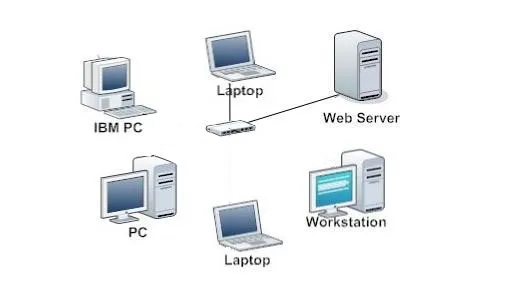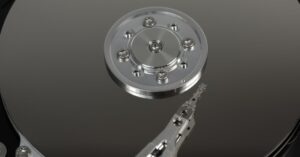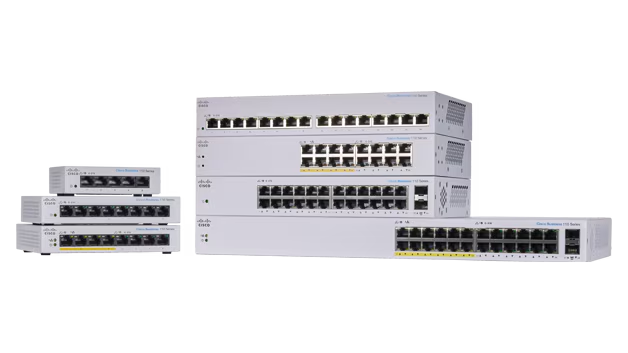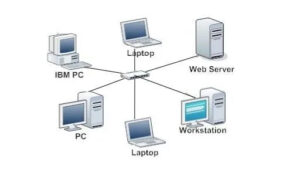Choosing the right Ethernet switch for your network can be a daunting task, especially with the myriad of options available on the market.
Whether you’re setting up a home office or managing a large-scale business network, selecting the right switch is crucial for ensuring smooth and efficient connectivity.
The key factors to consider include the number of ports, speed, manageability, and, of course, budget constraints.
We’ll guide you through these considerations, helping you understand what to look for and why it matters. By the end of this, you’ll be equipped with the knowledge to choose an Ethernet switch that not only meets your current needs but also anticipates future network expansions.
Should you buy Managed or Unmanaged?
Determining whether a managed or unmanaged Ethernet switch suits your setup hinges on your network needs, control level, and budget considerations.
Unmanaged vs Managed Switches
Managed Ethernet Switches
Managed switches allow for greater control over your network. You can prioritise traffic, create virtual networks (VLANs), and monitor network activity. Businesses with substantial networks often benefit from these features, as they enhance security and efficiency.
- Ease of Use: They require no configuration, so setup is quick and hassle-free.
- Cost-effective: Generally cheaper than managed switches, they make a good choice for tight budgets or less complex network needs.
- Less Control: With no ability to manage traffic, monitor network performance, or adjust settings, these switches are simple but limited.
Deciding Between Managed and Unmanaged
Your choice largely depends on the complexity of your network and the degree of control you need. If you oversee a growing network that requires careful management and advanced features, a managed switch might be necessary. Conversely, if simplicity and cost are more critical, and your network demands are straightforward, an unmanaged switch should suffice.
How much management do you actually need?
Determining the level of management required in an Ethernet switch centres on assessing network complexity and the desired degree of control. The distinction between Managed and Unmanaged switches forms an essential part of this decision process.
Benefits of Managed Switches
Managed switches offer comprehensive control features, allowing for intricate management of the network. These switches enable administrators to configure, manage, and monitor the network, enhancing its efficiency and security. Industries requiring robust network performance and security measures, such as data centres and large enterprises, benefit significantly from managed switches.
Benefits of Unmanaged Switches
Conversely, unmanaged switches provide basic connectivity and are plug-and-play devices. They lack the advanced capabilities of managed switches but excel in simplicity and ease of use. Small offices or home networks, where less customisation and control are required, find unmanaged switches adequately fulfilling their networking needs.
Choosing managed or unmanaged
- Evaluate Current Network Setup: If the current system experiences frequent disruptions or requires regular configuration adjustments, a managed switch might be necessary.
- Project Future Growth: Anticipate potential network expansions or increased traffic that could demand more sophisticated management features.
- Consider Staff Expertise: Having IT personnel with the skills to manage a sophisticated network indicates that a managed switch could be utilised effectively.
How many ports is enough?
Determining the adequate number of ports on an Ethernet switch hinges on current network demands and future scalability. It’s crucial to analyse both to avoid the pitfalls of under or overbuying.
Count your connected devices
Counting the number of devices connected to the network provides a ground rule for port requirements. Include all computers, printers, routers, and any other devices requiring a wired connection.
Switches with below 8 ports are not recommended, as you should remember that your PC and Router will take two of the available ports.
Common Port Counts are:
Allow for Network Growth
Consider potential network expansion over the next three to five years. Businesses expecting growth might want to opt for a switch with more ports than currently necessary. This foresight can mitigate the need for immediate future investments.
Consider Redundancy and Link Aggregation
For critical networks, planning for redundancy through additional ports is a smart move. Link aggregation, which combines several ports to increase throughput and provide redundancy, also requires extra ports. If the network must remain operational 24/7, having spare ports allows for immediate replacements or additions without downtime.
Standard or Modular Switches
Standard switches come with a fixed number of ports, typically ranging from 5 to 52 ports. Modular switches, although more expensive, offer the flexibility to add more ports as needed. Review if the initial higher cost offsets future scalability benefits.
By evaluating your immediate needs and future expansion, the decision on the number of ports needed becomes clearer. Typically, small offices or home networks function well with an 8 to 16-port switch, whereas larger organisations might start with 24 to 48 ports considering connectivity and network management practices.
Do you need Power over Ethernet (PoE)?
Determining the requirement for Power over Ethernet (PoE) capabilities in your Ethernet switch involves assessing your current and future network device needs.
PoE simplifies network setup by transmitting electrical power, along an Ethernet cable, to PoE-compatible devices like IP cameras, VoIP phones, and wireless access points.
This eliminates the requirement for additional power sources near each device, potentially reducing installation costs and clutter.
Do you have any PoE devices?
Start by listing all devices requiring network connections in your setup. PoE is essential, if devices such as security cameras, phones, or wireless access points need both power and network connectivity through a single cable. Considering the types of devices helps ensure efficient network design and deployment.
How much PoE power do you need?
Each PoE device consumes a specific amount of power, often measured in watts. Ethernet switches with PoE are rated under standards like IEEE 802.3af (PoE) and IEEE 802.3at (PoE+), providing up to 15.4 Watts and 30 Watts per port, respectively.
Ensure that the switch you choose has enough power output for your PoE device.
A PoE switch also has a total power output rating, so it’s also necessary to calculate the total power consumption all of your PoE devices require to select an adequately powered switch.
Buy a Switch with the future in mind
Plan for additional PoE devices as your network grows. Ensuring the Ethernet switch can support more power consumption and has additional PoE ports available than currently needed will accommodate future expansion without necessitating immediate upgrades.
By evaluating these aspects, you can decide if a PoE-supported Ethernet switch aligns with your needs, particularly if operational simplicity and reduced wiring costs are priorities. PoE capable switches often come at a higher initial cost but save on long-term operational expenses.
What factors should you consider when choosing the right Ethernet switch?
When selecting an Ethernet switch, factors such as the number of ports, speed, manageability, and your budget must be considered. Your network’s size and complexity will guide whether you need a managed or unmanaged switch.
What is the difference between Managed and Unmanaged Ethernet switches?
Managed switches offer advanced features like greater control over your network, allowing you to configure, manage, and monitor your network traffic for optimum performance. Unmanaged switches, however, are plug-and-play devices with no ability to configure, making them suitable for basic network setups.
Why would a network need a Power over Ethernet (PoE) switch?
A Power over Ethernet (PoE) switch is necessary for networks where devices, such as IP cameras and VoIP phones, require both power and data over a single Ethernet cable. This reduces the need for additional power supplies or outlets, simplifying the installation and reducing wiring costs.
How do you determine if you need a PoE switch?
To determine if you need a PoE switch, evaluate your current and anticipated network devices’ power and data requirements. Consider whether your devices support PoE, the total power consumption, and future scalability needs to ensure the switch can support growth without extensive upgrades.
Are PoE switches cost-effective?
Initially, PoE switches can be more expensive than non-PoE switches. However, they can lead to long-term savings by reducing the need for electrical wiring and outlets, simplifying network installations and maintenance, and supporting energy-efficient network operations.
- Customisation and Flexibility: Managed switches offer settings that can be fine-tuned to meet specific network requirements. Companies using applications that require high levels of data prioritisation, such as VoIP or streaming services, find this especially beneficial.
- Advanced Features: Include techniques such as loop prevention and network redundancy, which ensure continuous service and minimal downtime.
- Future Proofing: They adapt more easily to changes in network requirements. This proves valuable if your business anticipates growth or significant changes in network usage patterns.





